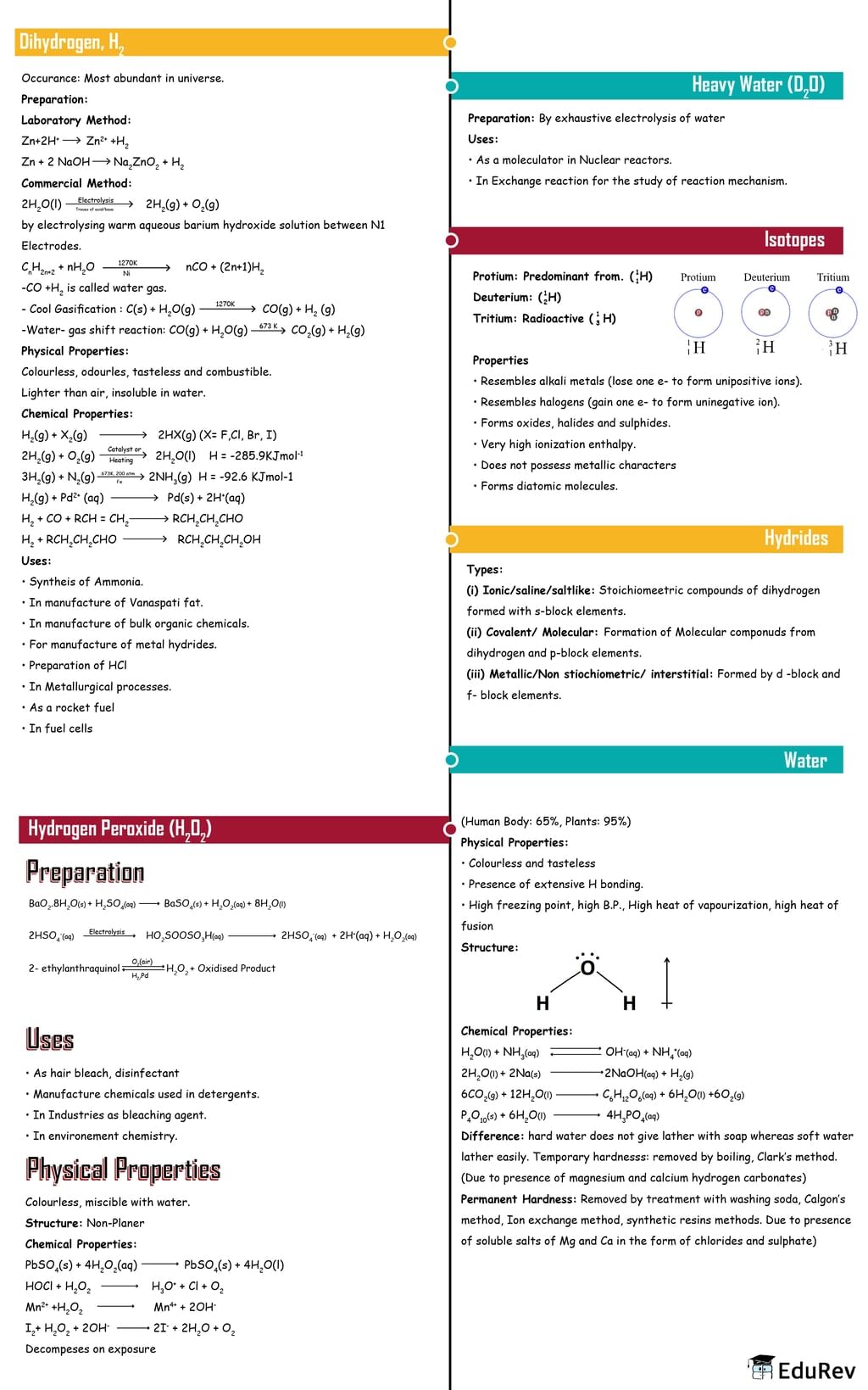NEET Exam > NEET Notes > Chemistry Class 11 > Mind Map: Hydrogen
Mind Map: Hydrogen | Chemistry Class 11 - NEET PDF Download

The document Mind Map: Hydrogen | Chemistry Class 11 - NEET is a part of the NEET Course Chemistry Class 11.
All you need of NEET at this link: NEET
|
114 videos|263 docs|74 tests
|
FAQs on Mind Map: Hydrogen - Chemistry Class 11 - NEET
| 1. What is hydrogen and how is it used as an energy source? |  |
Ans. Hydrogen is a chemical element that is the lightest and most abundant in the universe. It can be used as an energy source in various ways, such as fuel cells, combustion engines, and as a raw material in industrial processes. Hydrogen can produce electricity and heat with only water as a byproduct, making it a clean and sustainable option for energy production.
| 2. How is hydrogen produced and what are the different methods? |  |
Ans. Hydrogen can be produced from various sources, including fossil fuels, water, and biomass. The most common methods of hydrogen production are steam methane reforming (SMR), electrolysis, and coal gasification. SMR uses natural gas to produce hydrogen, while electrolysis splits water into hydrogen and oxygen using electricity. Coal gasification involves converting coal into a gas mixture that contains hydrogen.
| 3. What are the advantages and disadvantages of using hydrogen as an energy source? |  |
Ans. Some advantages of using hydrogen as an energy source include its high energy density, versatility, and zero greenhouse gas emissions when produced from renewable sources. Additionally, hydrogen can be stored and transported efficiently. However, there are also challenges and disadvantages, such as the high cost of production, the need for infrastructure development, and potential safety concerns due to its flammability.
| 4. How does hydrogen fuel cell technology work? |  |
Ans. A hydrogen fuel cell is an electrochemical device that converts hydrogen and oxygen into electricity, heat, and water. It operates by passing hydrogen gas through an anode and oxygen gas through a cathode, separated by an electrolyte. The hydrogen molecules lose electrons at the anode, creating positively charged hydrogen ions. These ions then pass through the electrolyte to the cathode, where they combine with oxygen and electrons to form water and release energy in the form of electricity.
| 5. What are some current applications of hydrogen and its potential future uses? |  |
Ans. Currently, hydrogen is being used in fuel cell vehicles, power generation, and industrial processes. It has the potential to be used as a renewable energy storage medium, allowing excess energy from intermittent sources like wind and solar to be stored and used when needed. Hydrogen can also be utilized in the production of synthetic fuels, as a feedstock for chemical processes, and in heating systems for buildings. Research and development efforts are ongoing to explore even more applications and advancements in hydrogen technology.
Related Searches





















